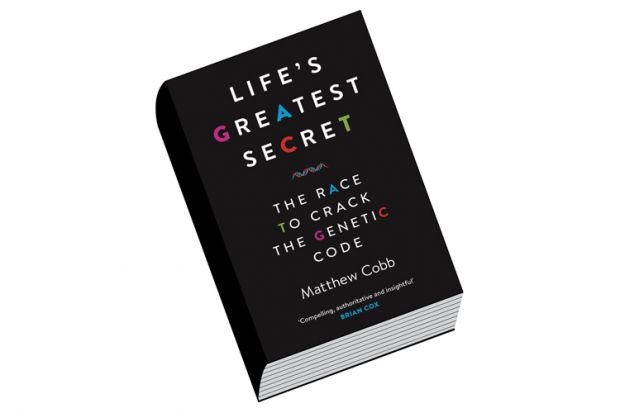A willow tree sheds downy seeds on to the breeze. It is reproducing by spreading willow DNA. And how to think of that DNA? As Richard Dawkins explained memorably in The Blind Watchmaker, the fluffy specks contain a representation of the tree: “It is raining instructions out there; it’s raining tree-growing, fluff-spreading algorithms.” And, he declares, this is not a metaphor: “It is the plain truth. It couldn’t be any plainer if it were raining floppy discs.”
The crucial ingredient of life, and evolution, is information. This view was already commonplace in the 1980s, as Dawkins’ reference to floppy disks indicates. It was not always so. The language of information, and the associated metaphors of transcription and translation in the conceptual architecture of molecular genetics, emerged in the middle of the 20th century along with the structure of DNA. The entwined strands of the double helix, held together by pairs of chemical units with complementary shapes, showed how the molecule itself could reproduce. The order of those four chemical units in each strand locks in the genetic information. The hereditary message is preserved in this genetic code.
The details of that code, and the way its triplets of base “letters” are read out to direct the order of different chemical units – peptides – in a protein, were worked out in just 15 years after the double helix was solved in 1953. Together they make up, if not “life’s greatest secret”, then a towering achievement of 20th-century science. How both puzzles were cracked is wonderfully well documented, and a story well worth the retelling, as biologist Matthew Cobb does here.
The structure of the code preoccupied theorists in the 1950s, in an intellectual climate strongly influenced by new cybernetics and information theory. In the end, Cobb emphasises, those ideas focused attention on feedback and control in biological systems, but didn’t do much more. DNA does indeed store information in the sequence of bases, but the precise encoding was revealed not by any of the schemes that theorists dreamed up, but by experiments. In 1961, two relative outsiders to the discussion, Marshall Nirenberg and Heinrich Matthaei, used isolated cell components to make the simplest possible DNA sequence produce the simplest protein – a chain of identical amino acids. That gave the first three-letter symbol of the DNA code. All that remained was to make more synthetic RNAs, the first transcript from the DNA, analyse the proteins made in the test tube, and work out the remaining symbols.
That needed a lot more complex experimental work, and took another five years, but it was clear that the code would now be solved. Its completion marked the end of the first, heroic phase of molecular genetics. That story is vividly rehearsed in the first two-thirds of Cobb’s book. It does not supersede earlier accounts such as Lily Kay’s Who Wrote the Book of Life? A History of the Code (2000) or – still a wonder for the general reader – Horace Freeland Judson’s monumental oral history, The Eighth Day of Creation: The Makers of the Revolution in Biology (1979). But this new telling is more compact without losing any of the intellectual excitement of the story. It is complemented by the final third of the book, a whistle-stop tour of developments in the 50 years since the code was uncovered. That takes in many unexpected discoveries in gene structure and function, and the shift from reading DNA laid down by evolution to writing new code to suit human designs.
Cobb concludes with some brief reflections on metaphors in science. He insists, contra Dawkins, that code here is a metaphor that enables even as it constrains understanding. It is not the only way of thinking about the way that life is organised at the molecular level. But as this book shows vividly, it has been a lastingly productive one.
Jon Turney is senior visiting fellow in the department of science and technology studies, University College London, and author of I, Superorganism: Learning to Love Your Inner Ecosystem (2015).
Life’s Greatest Secret: The Race to Crack the Genetic Code
By Matthew Cobb
Profile, 432pp, £25.00
ISBN 9781781251409 and 9781782830023 (e-book)
Published 11 June 2015
Register to continue
Why register?
- Registration is free and only takes a moment
- Once registered, you can read 3 articles a month
- Sign up for our newsletter
Subscribe
Or subscribe for unlimited access to:
- Unlimited access to news, views, insights & reviews
- Digital editions
- Digital access to THE’s university and college rankings analysis
Already registered or a current subscriber? Login
